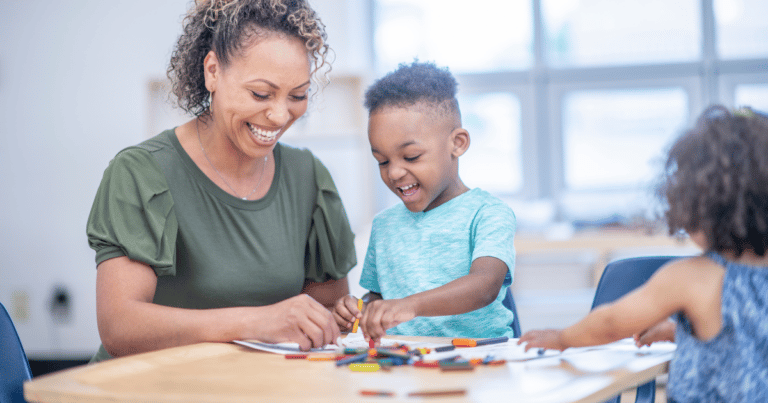
Practicing gratitude is a healthy habit whatever your age. If you’ve not tried it yet, I promise you, it feels good to give thanks for the good stuff happening in your world. For this reason, it’s a great habit to get children into from an early age.
Don’t just take my word for it. Harvard Health says:
“In positive psychology research, gratitude is strongly and consistently associated with greater happiness. Gratitude helps people feel more positive emotions, relish good experiences, improve their health, deal with adversity, and build strong relationships.”
The question is: How do we practice gratitude with children in a meaningful and fun way?
I first discovered the power of thankfulness when one of my daughters suffered anxiety at the tender age of seven. We tried doctors, counselors, school support, and every other resource under the sun. Nothing helped. Until we started a memory jar (more on memory jars further down this article) and discovered the positive mental impact of practicing gratitude.
Now, both my girls are teens, so the act of being grateful has changed through the years … and we know what works and what doesn’t. I’d love to share the best ways that we’ve practiced gratitude together so you can enjoy this pleasurable and effective pastime with your little ones.
Share gratitude at bedtime
This is one of our go-to methods for practicing gratitude when we don’t have much time. Before bed, have each of your children share one thing they’re grateful for that day. It’s a simple but effective way to end the day on a positive note.
If you are wondering how to start, follow these practical steps that worked for me.
- Make gratitude sharing into a relaxing and comforting bedtime routine. This will help you and your kids end the day on a cheerful note
- A small but powerful step measure towards a grateful heart is to keep it sweet and simple. Don’t overthink it. Simply ask your kids to share one thing they are grateful for daily
- Dedicate your time and show genuine interest. Doing this will help boost their confidence.<!-- /wp:paragraph --
- Ensure that everyone participates. Gently nudge anyone feeling shy and remind them how much you enjoy hearing from them.
- Encourage the kids to reminisce about their day and concentrate on the good events. This is also a perfect way to help them have a sound night’s rest.
Start a memory jar
My youngest loves this activity.
It is a simple and effective way to practice gratitude and also to collect memories.
To start this, get a nice jar and some small colourful pieces of paper. Next, ask each child to write something they are grateful for and keep it in the jar. The last part is spending quality with the kids to read all the notes together once the jar is full.
Here are some suggestions to make it work. Trust me, they are effective.
- Be creative. Decorate the jar with the kids using paint, glitter, stickers, or any other decorations of your choice. The more creative, the better!
- Set a specific time when everyone must add to the jar. It could be daily, weekly, or monthly, and set a reminder to make it a routine.
- Of course, everyone must participate! So, you should encourage participation. Ensure everyone gets the opportunity to add to the jar.
- To make this effective, make the memory jar interactive. You can add different themes or cues to motivate the kids to recall on exact things they are grateful for.
- Children love fun a lot so keep it fun. You can decide to let them come up with their ideas. That way it will be more unique and engaging.
Further reading: What’s a memory jar and how can it help my child?
Write or draw in a journal
Another fantastic method to practice gratitude with your children is by asking them to write or draw in a journal.
I tried these with my daughters. You may want to try it also.
Provide cues or questions to help your children think about what they’re grateful for. For example, “What made you happy today?” or “What are you thankful for in your family?”
Remember to be creative and keep it fun. Use colorful pens, stickers, or other decorative items they like to make the journal more fun and engaging for children.
You can also encourage them to use drawings or illustrations to express their gratitude.
Say thank you
Saying “thank you” may seem obvious, but it’s essential to habitually say it to your children.
Here are some suggestions to encourage them to say these all important words.
- Always lead by example. Your children are watching everything you do and they imitate you. Consciously say “thank you” in your relations with others. Growing up, my mother would always say “thank you” each time she sends me on an errand. It became part of me to also say “thank you” to her and I extend it in my interactions with others.
- Give positive feedback each time your children say “thank you”. You can say “Oh, you said thank you, I appreciate that” Doing this will encourage your children to keep saying “thank you”.
- Finally, always reward your children when they say “thank you”. Everyone loves getting rewarded for something good they do.
Craft and give a gift or card
Have you considered allowing your children to craft a homemade gift or card? If you haven’t, now is the time to start because this is a great way to practice gratitude with your children.
Allow them to think about someone they are grateful for and craft a gift or gratitude card to show their gratitude.
Here are some useful tips for making and giving gifts or cards to children.
- Encourage them to use their creativity and be imaginative when making gifts/cards.
- Emphasise the value of giving thoughtful gifts/cards and the happiness felt by the receiver.
- Allow your children to present the gift or card in person. This will help build their social aptitudes and demonstrate the effectiveness of their gratitude.
Go on a gratitude scavenger hunt
Another fun interactive way to practice gratitude with your children is by going on a scavenger hunt.
Follow these steps to get started:
- First, make a list of items related to gratitude to find. This may include a flower, a rainbow, or a nice person. Doing this will help you maintain the concept of gratitude and make the activity more meaningful.
- Put together some clues on little cards who simple tell them clues so they know where to look.
- The hunt ends once the children find every item on the list. For each item they find, let them reminisce on the reason they are grateful for it.
Play a gratitude game
A good way to search for gratitude games is online. There are numerous games available to choose from.
These are some games I play with my daughters. You should give each of them a trial and let your children decide on the ones they like best.
Gratitude board game
You will find different board games online that are developed to allow children to learn about gratitude. Games such as “The Gratitude Game” or “Gratitude: The Game of Giving Thanks.” These games are fun and interactive to play. They also teach gratitude.
I’m Thankful For
This is a simple and easy game to play. In this game, players take turns expressing something they’re thankful for.
Gratitude Charades
To play this game, divide the children into two groups. Have someone from the first group pick a card and act out what is written on the card. Things written on the cards are things they are grateful for. The other players in the first group have to guess what it is.
Gratitude Scavenger Hunt
It is just like the typical scavenger hunt. Make a list of gratitude-related things and let your children go in search of them.
Gratitude Match
You can create a memory card game by cutting out images of things related to gratitude and shuffling them on a board with them against their word/phrases. Then have your children match these images to the corresponding word/phrase.
Create a gratitude tree
If you are looking for a more fun and visual way to practice gratitude with children, try the gratitude tree. You can use this as an alternative to the memories jar.
To get started, get a small tree/branch, multicolored ribbons, or paper. Let your children draw or write out something they are grateful for then hang it on the tree.
Remember to be creative by decorating the tree with items that symbolize the things they are grateful for. For instance, they can hang decorations together with family pictures, or of friends and even special events
Volunteer together
Another perfect way to practice gratitude with your children is by volunteering with them.
You can teach your children the essence of giving back to society and being thankful for what they own. So start by looking for local volunteer chances and do it with them.
Here are some tips for volunteering together as a family you may want to try.
- Find suitable age-appropriate chances for your children.
- Motivate your children to participate actively in volunteer work. You can assign tasks and attach a deadline too. This will give allow them to completely be in charge of a project.
- Be creative and make the experience fun so that they can always look forward to new volunteer opportunities.
Practice mindfulness
Mindfulness is a great way to teach children about gratitude. Encourage children to be present at the moment and to focus on the good things in their lives.
Start with simple mindfulness exercises such as deep breathing, body scanning, or progressive muscle relaxation. As children become more comfortable with mindfulness, you can introduce more complex workouts.
Incorporate fun and interactive exercises such as yoga, art, or games to make mindfulness more interesting for children.
Ensure you are practicing mindfulness in your interactions with your children. This helps to create a culture of mindfulness in the home and encourages children to adopt the habit.
Motivate your children to practice gratitude in their daily lives and watch as they grow into happy and fulfilled individuals.













